
Lake ‘bullicante’ and the anarchy of nature
The poetics of a space that might never have been – a lake, that emerged in the city of Rome during the excavations for a shopping mall. Photographer Dario Li Gioi has been visiting this place for years and contemplates how its unique ecosystem today offers a counterbalance to the city’s public perception and living dynamics.
It was beyond that screen of fickle humors that his gaze wished to arrive:
the form of things can be discerned better at a distance.
Italo Calvino, Invisibile Cities
Everyone knows where it is. It lies behind a low wall and a line of trees along the Prenestina, the consular road that, since ancient times, has connected Rome to the town once known as Praeneste. Yet the history of this place is an account of our present times; possibly even future ones, since it continually demonstrates a capacity for renewal. The residents of Rome’s Prenestino Labicano neighbourhood would be well aware that I am referring to the former Snia-Viscosa area, located just a few kilometres east of the city centre.
The first time I visited this place, years ago, it was spring, 25th April. There was a gig; they used to host numerous events here until a portion of the area became a natural park. Yet, even back then, accessing this territory felt like stepping into another world, with sporadic dark green patches and dilapidated structures dotted around the landscape. This holds even more true today: once you enter, the noise subsides and, for a moment, the gaze lingers on the distant surrounding buildings, as if searching for a more stable source of visual information.

The Snia-Viscosa area is the site of a former factory. For a little over three decades, from 1922 to 1954, the people who worked here endeavoured to replicate the quality of the finest silks by producing the so-called ‘fake silk’ – a cellulose fibre later known as rayon. Located in an area where economic immigration from other parts of Italy had significantly reshaped the demographic landscape, this massive complex – one of the most important of the capital – represented the promise of a bright future for its workers and their families.
Thus the factory was also a place of community and struggle. During the years of its activity, the Snia-Viscosa was the scene of several spontaneous strikes, protests and occupations: against high living costs, for wage adjustments, against layoffs. 1949 is a notable example: the women workers – who, for decades, represented about 70 percent of the workforce – occupied the factory for 34 days, with solidarity and direct support from residents across the neighbourhood.

However, that promise of a future soon faded into nothing: in 1954, the Snia-Viscosa closed its operations for good. This area of Italy’s capital suddenly came to experience an unusual calm, with nature becoming the sole guardian of over one hundred thousand square meters of land for decades.
It was not until the early 1990s, after it was put on the market, that a new, possible future of this place began to take shape. The way it happened was completely unexpected: during excavation works for the construction of a shopping centre, the real estate company Ponente 1978’s bulldozers damaged one of the acquifers of a nearby volcanic complex. Water began to gush from the ground incessantly; water in such abundance that it filled the hollow created by the diggers.
On that day, in the area of the former Snia Viscosa factory, a lake was born. The locals called it lago bullicante (literally, ‘the boiling lake’), in reference to the sulphurous emissions that would make these once subterranean waters bubble. From that construction accident, where nature hurriedly covered the space created by human activity, what remains today is the concrete skeleton of what was conceived as a parking lot. It emerges from the water, surrounded by a thicket of locust trees, willows, and impenetrable marsh reeds.

In some ways, the Eternal City is also a fluid city. Water slips beneath the metropolis, with the language of humans evoking its existence on the surface. The area of lago bullicante used to be one of marrane – an open-air, shallow ditch which, within its waters, children of the 1930s would still play games.
Thus the geography of signs on the surface is sometimes that of a liquid landscape: via della Marrana, via della Marranella, via dell’acqua bullicante (‘boiling water road’), Marrana dell’acqua Mariana (‘Marrana of Mary’s water’). Such references are scattered over the whole city. For example, going south, you come across places such as Fosso dell’acqua acetosa (‘vinegarish water ditch’), or the ‘Marrana of the three fountains’. Some landmarks have now disappeared, erased by urbanisation, such as the ‘Ditch of the Three Madonnas’, renamed via Sannio for about a century.1
Yet water seems to persist in the common imagination as a primary element. In the case of the ‘boiling lake’, water has even taken up a radical role; it is a living, active and fighting element. In Roman rap band Assalti Frontali’s song Il lago che combatte (‘the fighting lake’), you can hear the following lyrics: ‘In the midst of concrete monsters / This water now reflects the sky / It is nature fighting back / And this neighbourhood is a bit less dark.’

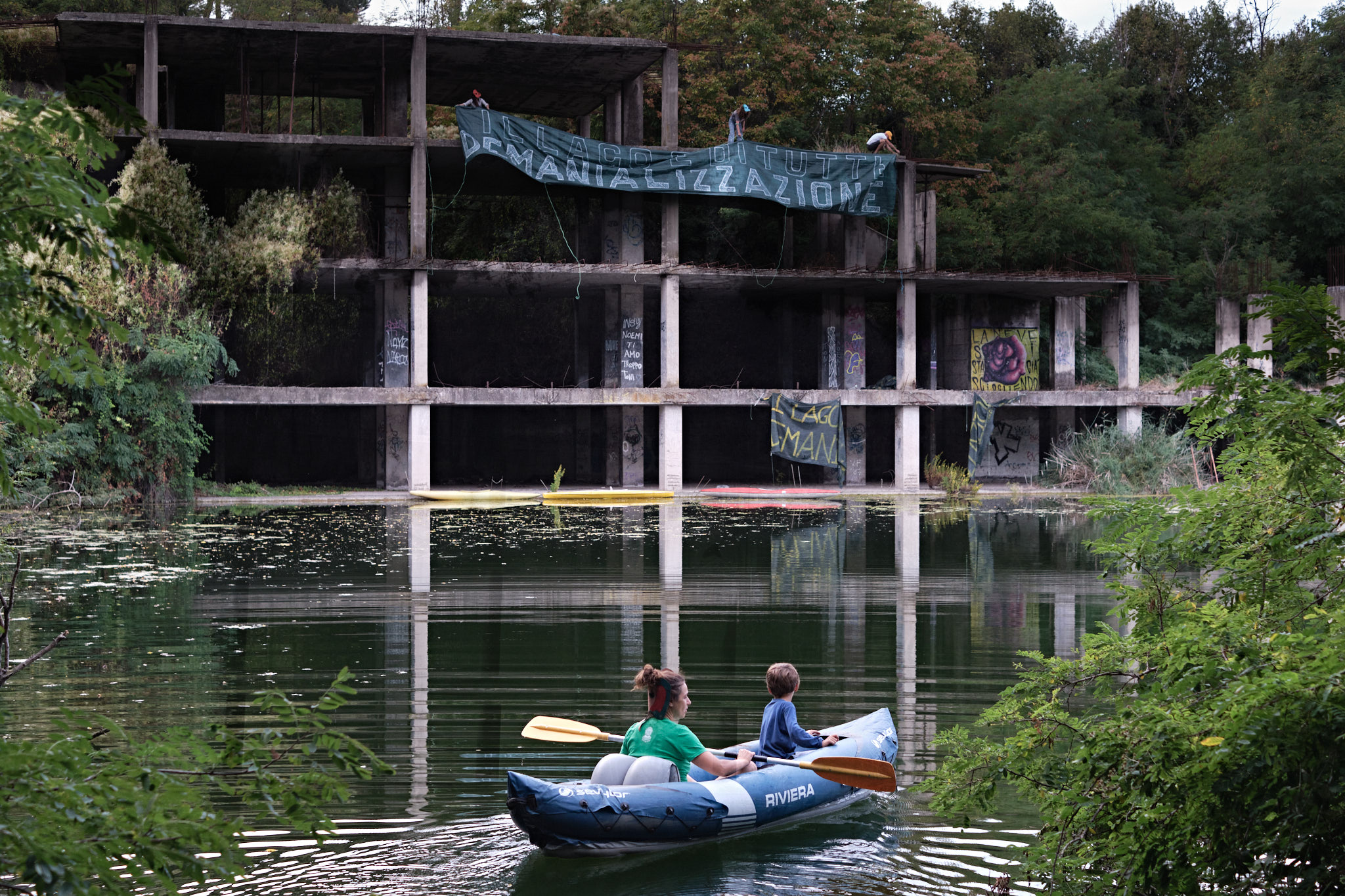
After all, the former Snia-Viscosa area is one of the very few known cases of spontaneous renaturation in Europe. Today, this green territory hosts more than 350 spontaneous botanical species; four different habitats, protected by European regulations to preserve biodiversity; almost ninety species of birds, and thirty of dragonflies – a third of all those found in the whole of Italy.
As explained in an article from L’Essenziale, this area is also situated ‘along migratory bird routes’, where it functions as a ‘stopover point for numerous species, offering them a place to rest and feed.’2 It also houses an apiary, open to the public, which produces honey every year.
Activists are determined to preserve this new state of affairs, safeguarding the local flora and fauna. But it appears that the area itself is already progressing in a certain direction, as noted by one activist who pointed out to me how the lake has a very limited access perimeter. As you walk around it, your gaze is captured by confused views, the overview obstructed by the dense underbrush that almost acts as a protective barrier. It is well known that the lake is right there – everyone is familiar with its location – but its presence is not immediately apparent or easily comprehensible.
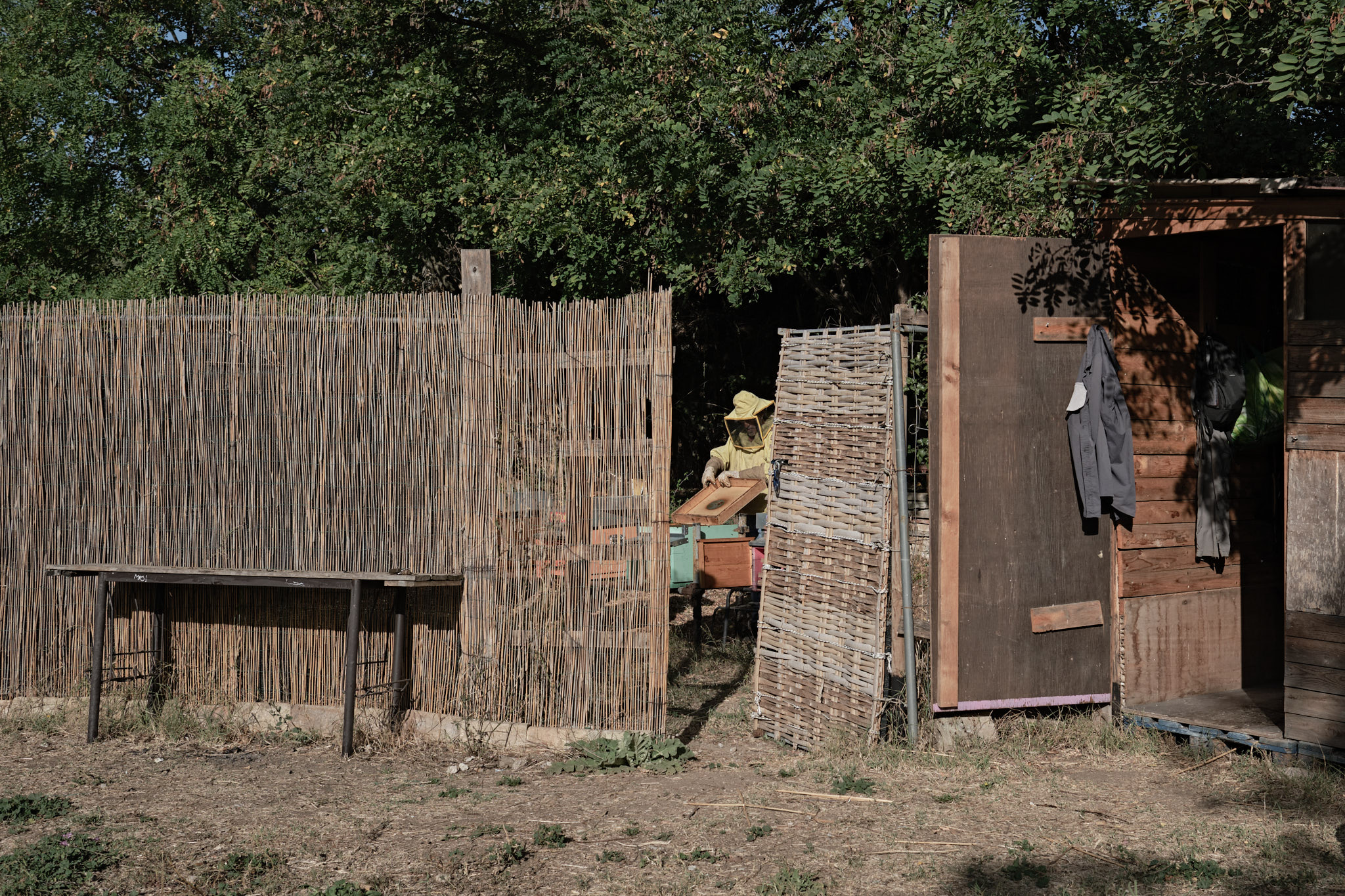
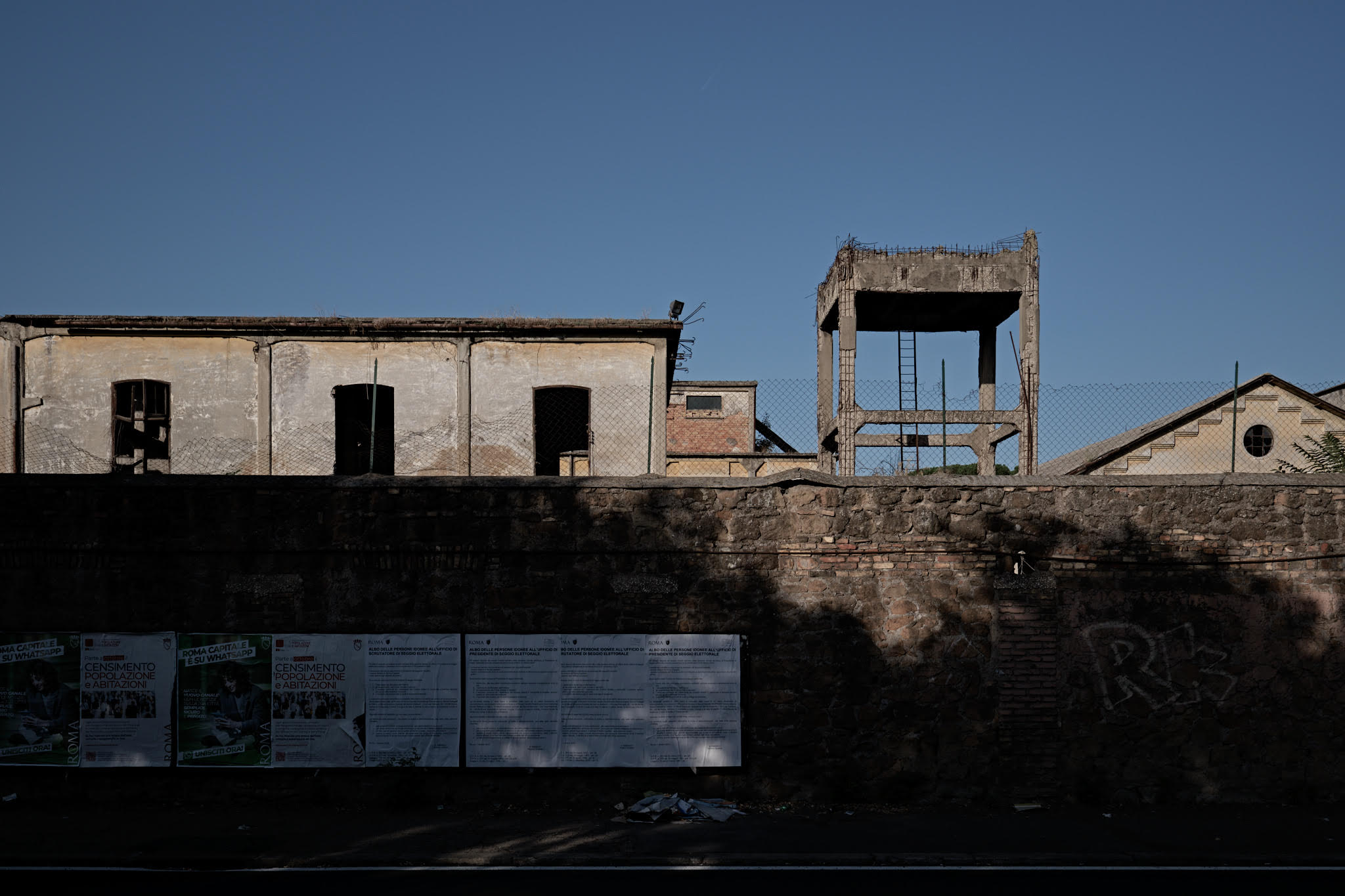
We are in a space that would like to project itself towards the city, to become part of it, to be protected by it: it has the potential to become a gathering place for a neighbourhood with a high population density, and unfortunately also high levels of pollution. Yet, it is separated from the city by economic interests.
For many, the possibility of this area remaining untouched is just a utopia. It is seen as something unattainable in a city like Rome, which tends to engulf everything that does not bring profit. ‘All the former Snia area, Natural Monument now’ is the writing that stands out on the east wall, facing the traffic on Via Portonaccio. Yet part of this area, immediately adjacent to the lake, is already private, and the owner has a building permit.
The lake thus lives in a state of suspension. Just behind it, there is Parco delle Energie, a place that was spared from speculative developments. But there is an awareness of the looming threat that the other block – the Snia-Viscosa warehouses – may soon be transformed into something else. Up until some time ago, it was designed to become a logistics hub. Today, despite this initial idea having been abandoned, there are still intentions to construct something on the site, with the certainty that it will lead to the disruption of the microclimate that has developed in the area over the decades.
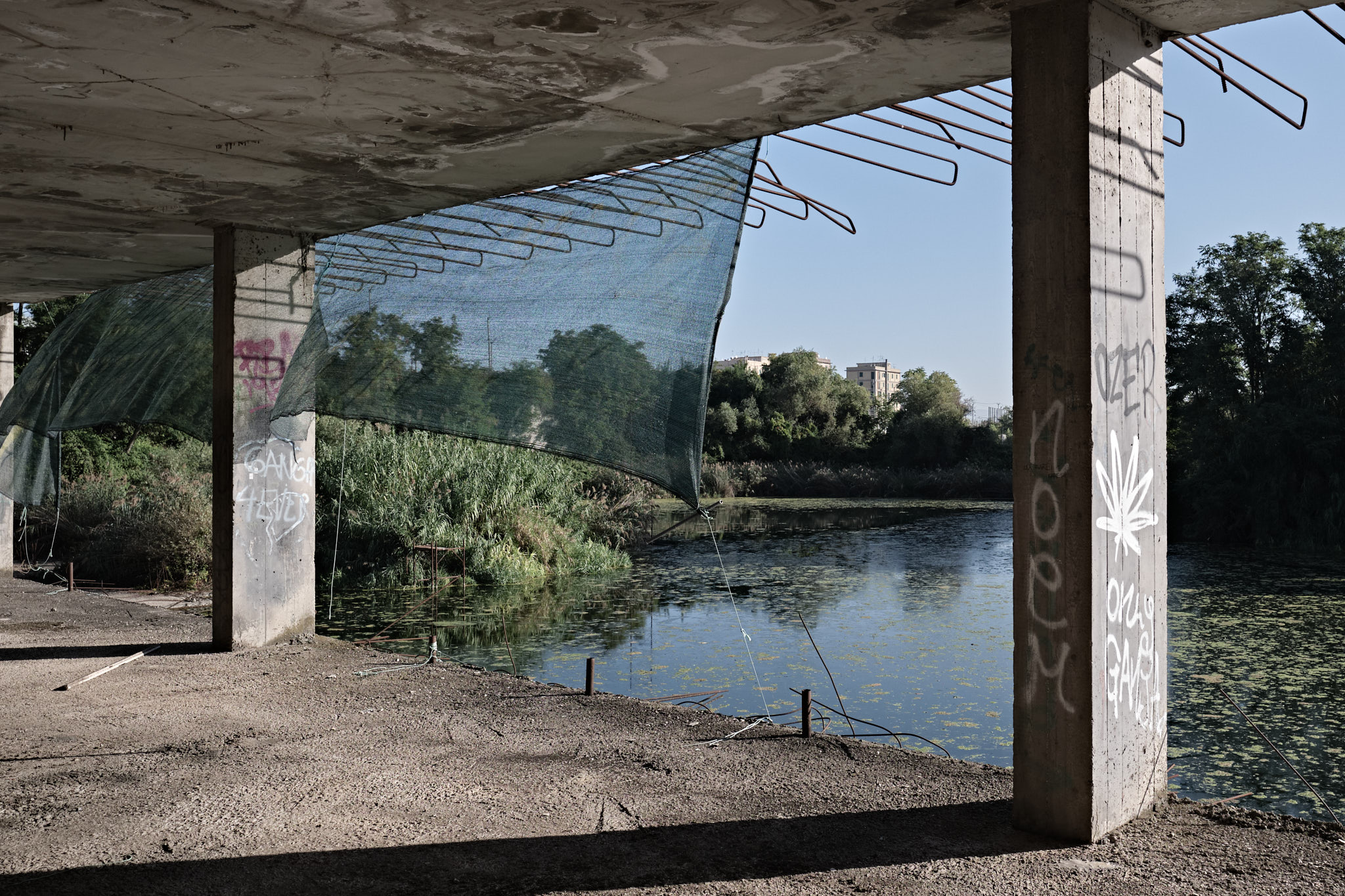

But what place, then, is the lago bullicante? While we can classify utopia as the concept of an ideal and thus inherently unattainable society, we can consider the area of the lago bullicante as its counterpart: a heterotopia, a place firmly grounded in the present reality.
As Michel Foucault theorised, heterotopias are ‘something like counter-sites’, where the ‘real sites that can be found within the culture, are simultaneously represented, contested, and inverted’. Their forms may vary greatly yet a particularly interesting trait of heterotopias is the specific function that they can perform ‘in relation to all the space that remains’.3
Some spaces thus possess ‘the curious property of being in relation with all the other sites, but in such a way as to suspend, neutralise, or invert the set of relations designated, mirrored, or reflected by them’. It is precisely this ‘niche of space that differs substantially from all other spaces’ that brings out, rendering evident, the rationale in which all the remaining space is organised.4
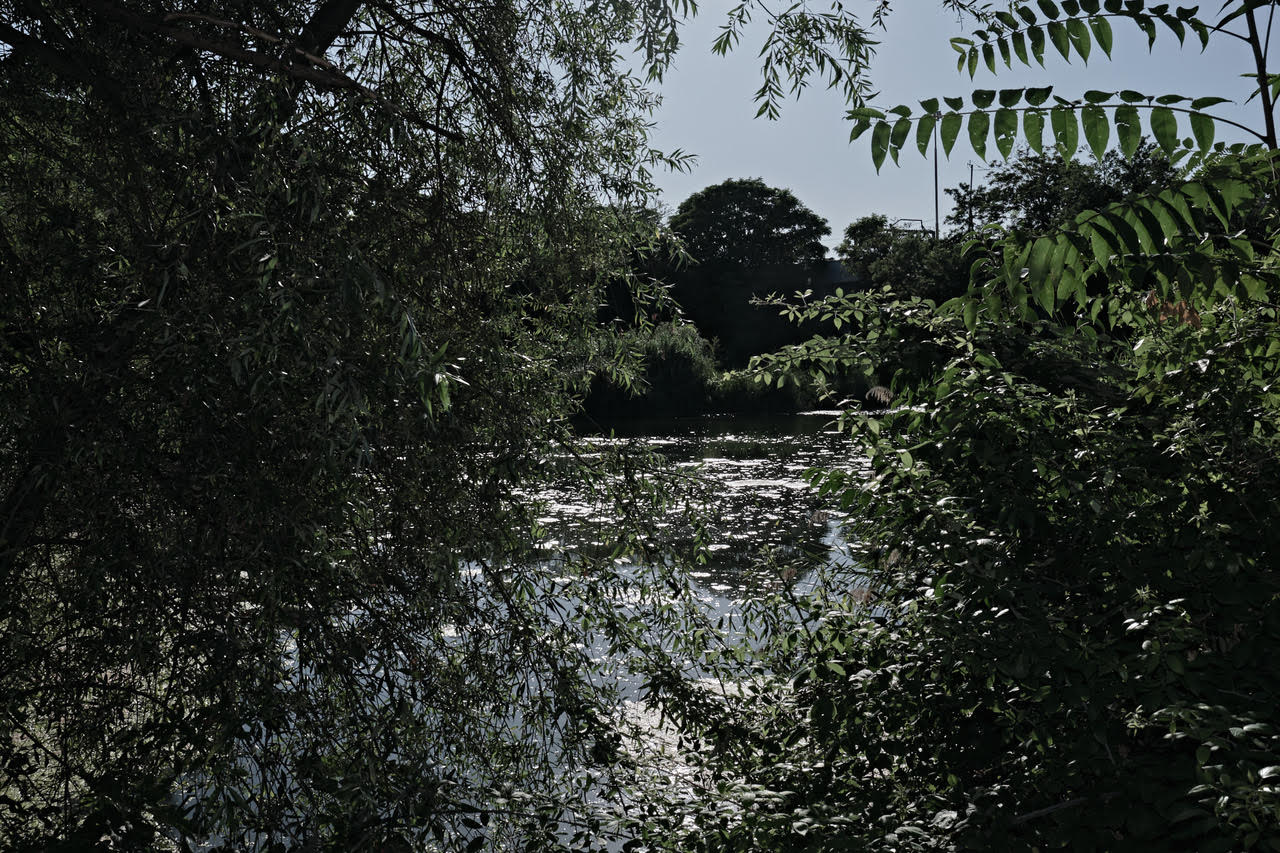
Thus while utopias tend to provide consolation while being unattainable, heterotopias have a disruptive quality, as they concretely give rise to spatial fractures charged with meaning.
It is these fractures that generate action. The former Snia-Viscosa, what it is and what it represents, can really be seen as a site of ‘resistance and mutual symbiosis, where market relations that tend toward parasitic colonisation of places remain excluded’.5 It is as if the spirit of the old factory re-emerged from the past, in the form of widespread collectivism and a spirit of resistance for the future of the place. Isn’t any space, after all, the product of the struggles behind its creation?
Space is where power, knowledge, and memory converge. The memory of a place defines our identity by recounting our history – in this case, our labour, conflicts, destruction through warfare, periods of abandonment, and ongoing social struggles – today culminating in the materialisation of the lake. It is the sound of the place’s life expanding incessantly. This body of water, as the epitome of this entire space, is at the centre of a struggle; to remain a distinct space and serve as a reminder of those human rights that are often overshadowed by market dynamics.
Places weave narratives and craft maps. This, in turn, is my personal map – a blend of anthropological observation and symbolic representation. The cyclical cadence of seasons shapes life’s tempo, influencing our emotional states of being. Upon entering this space, the outside world recedes: its usual clamour is right there, but it is kept beyond the confines of the former factory’s walls.
Footnotes & references
[1] A view of via Sanno in 1868, Roma Ieri e Oggi, https://romaierioggi.it/via-sannio-ettore-roesler-franz-1868/ (last accessed on 18/10/23)
[2] Ylenia Sina, Il lago nel cuore di Roma che rischia di scomparire, https://www.internazionale.it/essenziale/notizie/ylenia-sina/2023/01/19/lago-ex-snia-roma (last accessed on 10/10/23)
[3] Michel Foucault, Of Other Spaces (1967), available at Foucault.info, https://foucault.info/documents/heterotopia/foucault.heteroTopia.en/ (last accessed on 14/10/23)
[4] Ibid.
[5] A. Zabban, L’eterotopia nel pensiero di Foucault, https://www.ilbecco.it/leterotopia-nel-pensiero-di-foucault/ (our transation) (last accessed on 14/10/23)
Recent articles

Southern California is many things. Quite infamously, it is known as a landscape defined by the automobile, from the emergence and diffusion of the highway system to fast food burgers, and the suburbanization of the United States. Walking this place then, would seem not only inconvenient, but ill advised. In… Read more »

What is today known as ‘whistleblowing’ could once take the form of interacting with a threatening gaze carved into the city wall. It is the case of the ‘boche de Leon’ or ‘lion’s mouths’ disseminated by the old Venetian Republic throughout its territory to suppress illegal activities. Through a close… Read more »

As he navigates through the recurrent lockdowns of the pandemic, stranded between hitchiking and muggings, job hunting and separations, Fabio Valerio Tibollo rediscovers photography as a powerful coping mechanism. Recording everything that happened around him for one year straight, from attending momentous events to finding curiosity in shots of simple living,… Read more »

